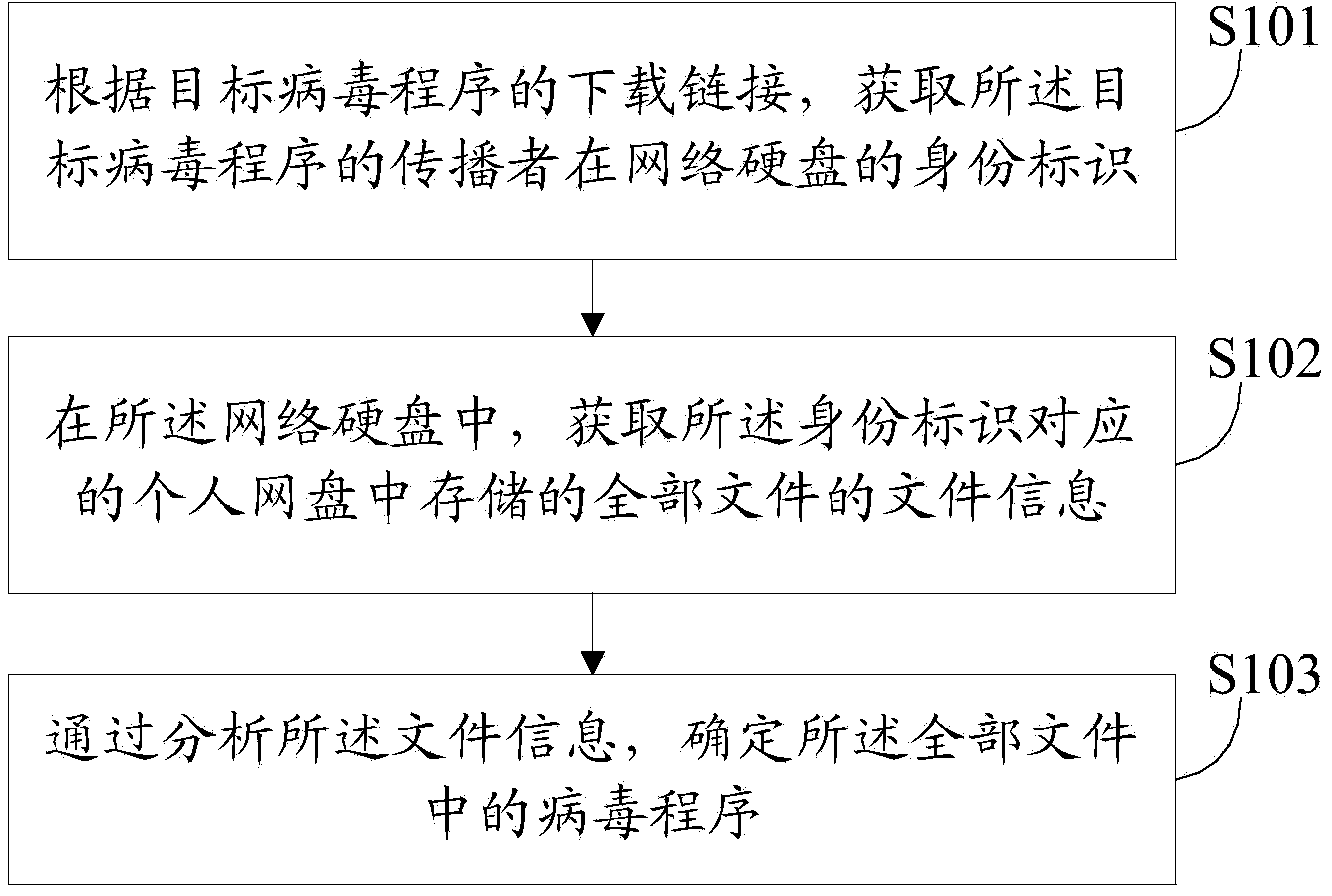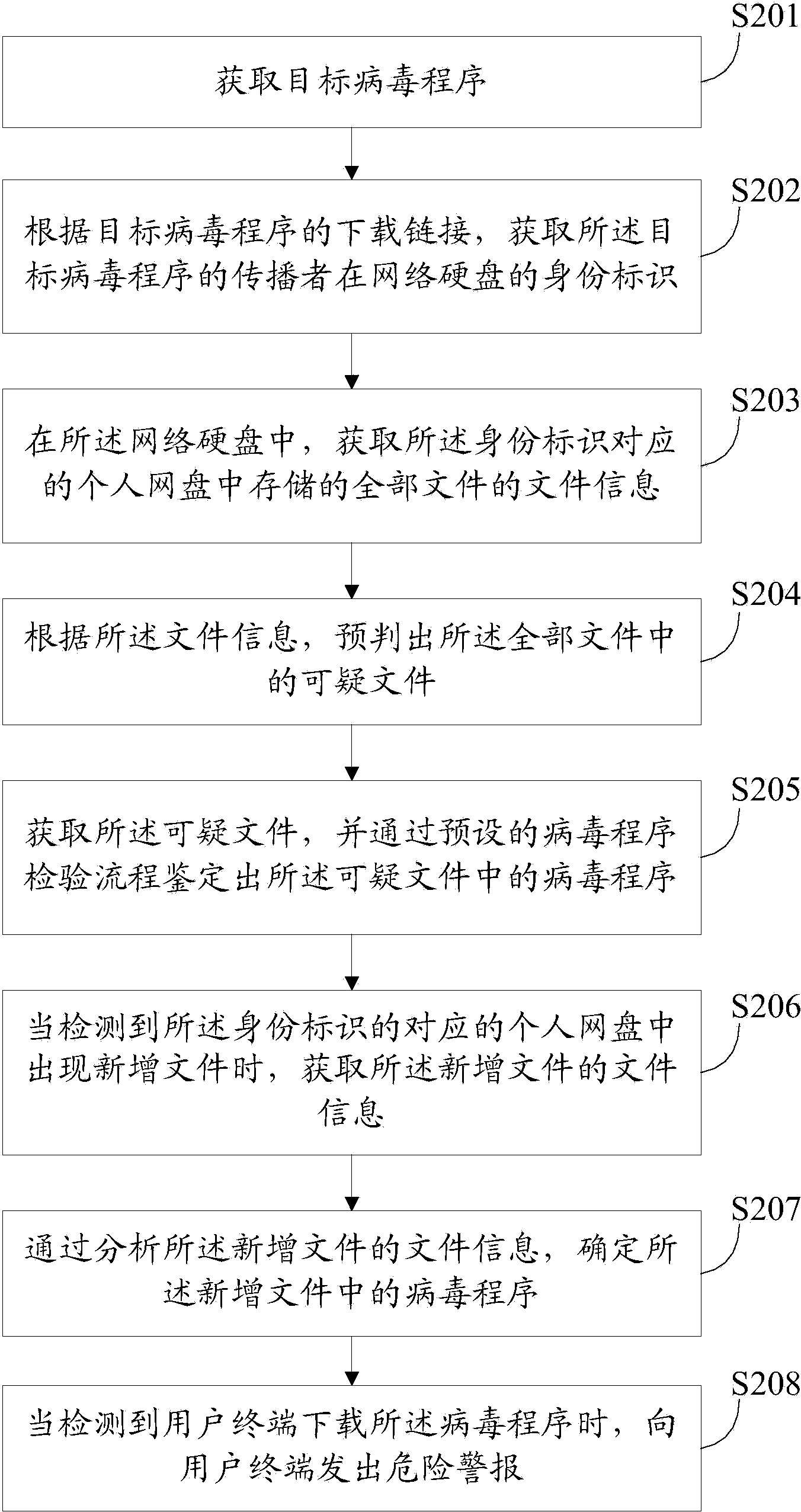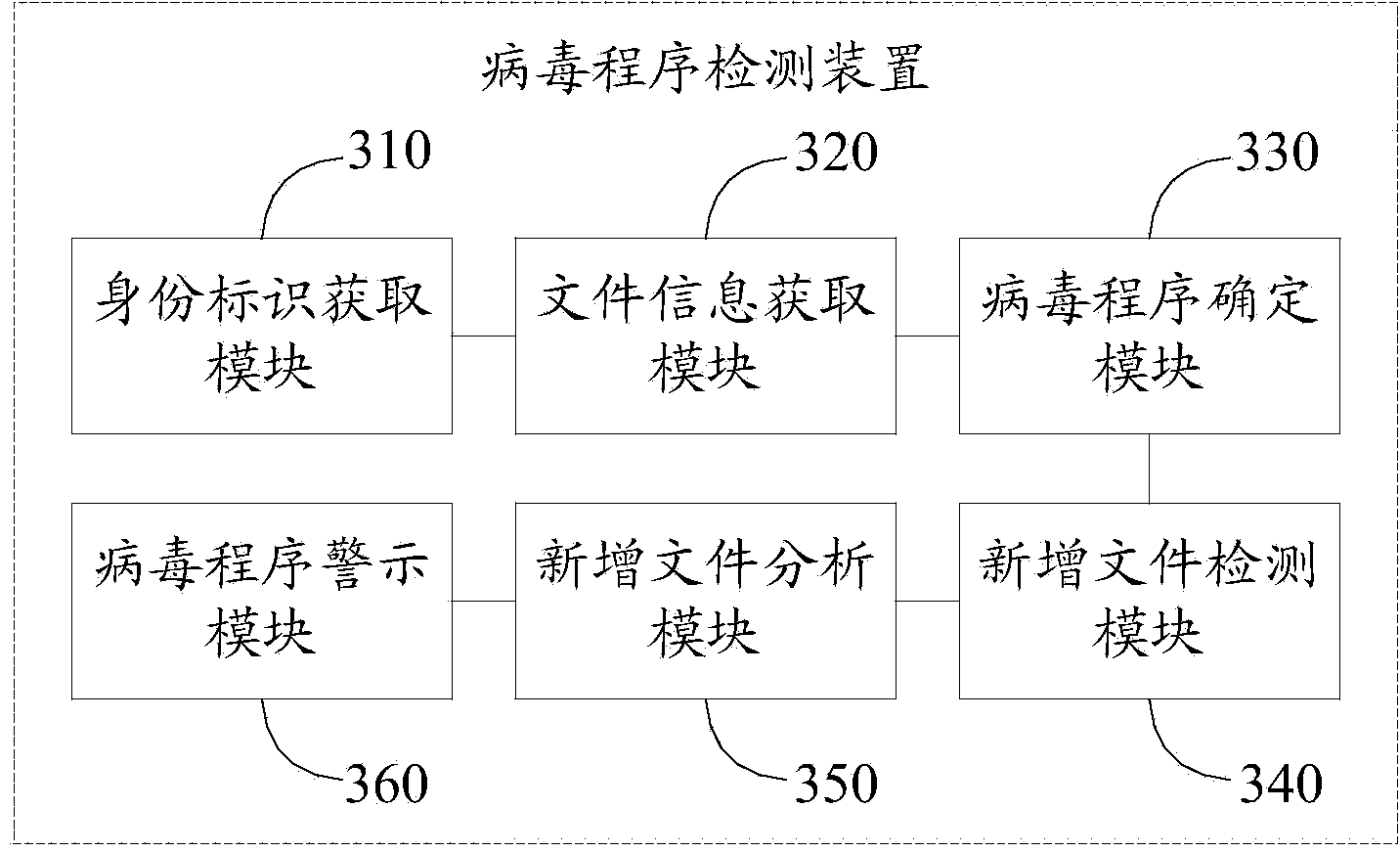Method for detecting virus program and virus program detecting device
A virus program and detection device technology, applied in the field of network security, can solve problems such as inability to find download links, and achieve the effect of strengthening protection and improving experience
- Summary
- Abstract
- Description
- Claims
- Application Information
AI Technical Summary
Problems solved by technology
Method used
Image
Examples
Embodiment Construction
[0020] The following will clearly and completely describe the technical solutions in the embodiments of the present invention with reference to the accompanying drawings in the embodiments of the present invention. Obviously, the described embodiments are only some, not all, embodiments of the present invention. Based on the embodiments of the present invention, all other embodiments obtained by persons of ordinary skill in the art without creative efforts fall within the protection scope of the present invention.
[0021] The online hard drive mentioned in the embodiment of the present invention is a cloud network service for uploading and downloading services provided by Internet service providers, such as Kingsoft Express, Baidu Netdisk, 360 Cloud Disk, etc. Virus program disseminators only need to create an account on the network hard disk to store the virus program in the personal network disk corresponding to the account, and induce users to download the virus program thr...
PUM
 Login to View More
Login to View More Abstract
Description
Claims
Application Information
 Login to View More
Login to View More - R&D
- Intellectual Property
- Life Sciences
- Materials
- Tech Scout
- Unparalleled Data Quality
- Higher Quality Content
- 60% Fewer Hallucinations
Browse by: Latest US Patents, China's latest patents, Technical Efficacy Thesaurus, Application Domain, Technology Topic, Popular Technical Reports.
© 2025 PatSnap. All rights reserved.Legal|Privacy policy|Modern Slavery Act Transparency Statement|Sitemap|About US| Contact US: help@patsnap.com



